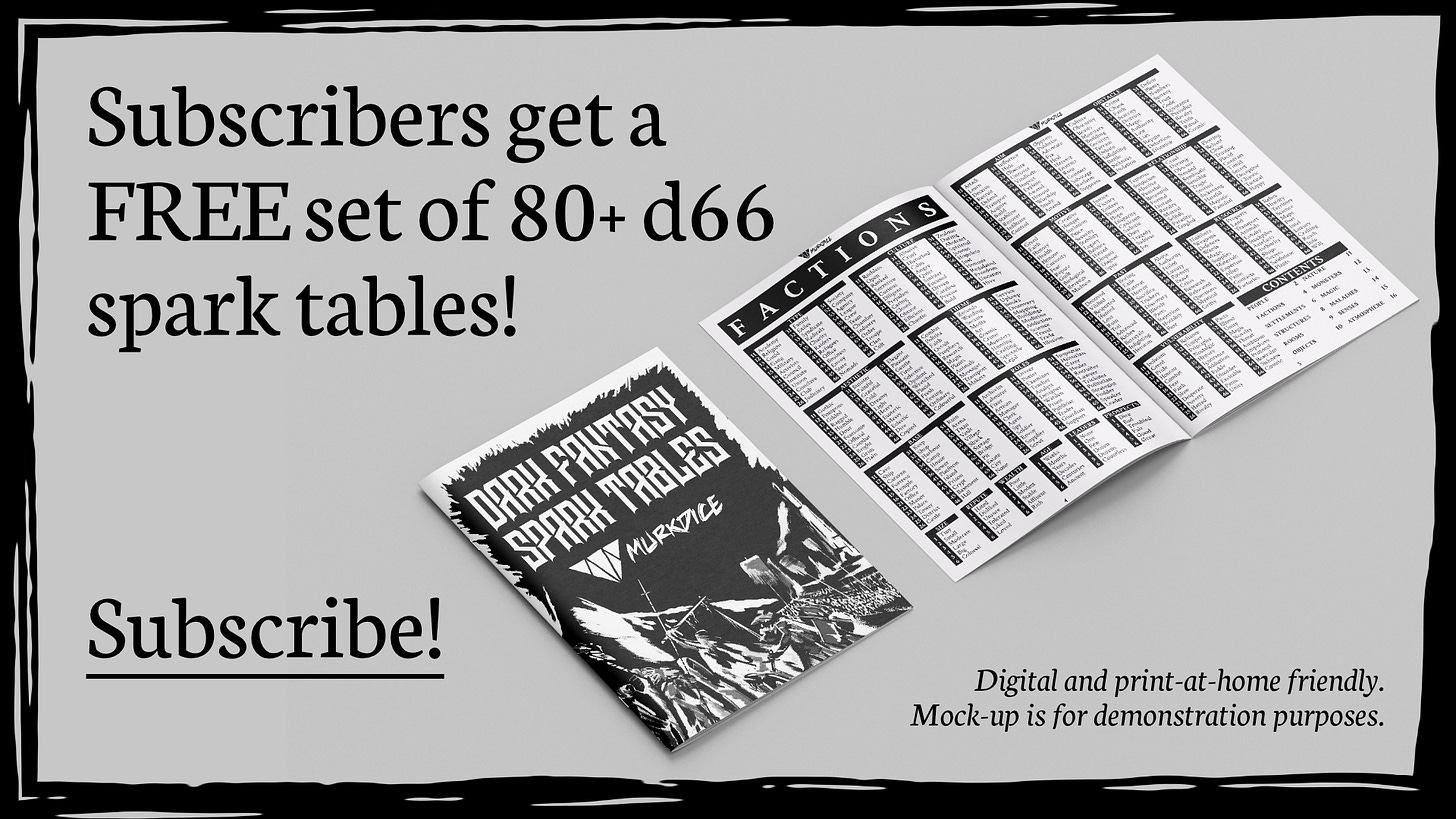This article contains affiliate links, meaning I get a commission if you make purchases using these links, at no cost to you.I’ve got a secret. Don’t tell anyone.
Years before I was an NSR junkie, I was quite mad for Forged in the Dark (FitD). I don’t play FitD stuff so much now, but there are lessons from story games that I think are universally useful.
Part of the Powered by the Apocalypse (PbtA) and FitD paradigms is failing forward: the idea that situations become more complex rather than closing off or immediately biting the characters in the butt. We aren’t affecting the character sheet or killing favourite NPCs yet.
I’m running NSR games, but the ‘make the situation more complex’ move is one I think has value across all ttrpgs. When I wrote my rpg Void Above (which you can get a free Quickstart Guide for), I wanted to codify a framework for the general ways you can make a situation more complex.
If you like rpg design thinking, I share my freshest thoughts in MurkMail Premium. Join MurkMail Premium (get a 7-day free trial).
Escalating the problem
In Void Above, I distilled ways of adding complexity to a ttrpg problem scenario into 5 methods. Let’s use a simple example: trying to diffuse a bomb.
Harder: The obstacle gets more complex. Either further action (implying risk) or a different approach is needed. You realise an anti-tamper device was installed. The timer skips 30 seconds.
More: An extra factor arises, which requires managing an additional issue whilst continuing to work on the first problem. The enemy sends in a drone to attack you as you attempt to disarm the bomb.
Future Risk: A potential complication is hinted at, something is going to make the situation harder later on. The explosive device begins leaking and fumes start rising. Are they poisonous?
Lost Opportunity: The opportunity closes off. This isn’t working, you don’t have enough time. You can’t defuse it, you need to deal with the bomb another way.
Up the Stakes: The risk evolves. You get a message from your handler informing you the evacuation of the surrounding area hasn’t completed, civilians will die if you fail.
These are all general ways of expanding the complexity of a problem. From the NSR standpoint, you use them when it makes sense: falling 100m doesn’t have escalation, just splat.
Whether I’m running Into the Odd or Cy_Borg, this framework from Void Above serves me well for making situations more detailed and tense.
I write all my nonsense down in Muji notebooks (absolutely, 100% THE BEST notebooks) with a Lamy pen. Highly recommended.
MurkMail relies on its supporters. If you enjoy MurkMail, one of the best ways you can help us out is by sharing our work. Introduce your ttrpg friends and associates to MurkMail!





I try to always allow for stuff like this in the games I run, I haven't seen it codified quite like this before, great write up! To me, OSR are about emergent narratives, and this is a great tool to that end.
I think anybody who's read your stuff knows your little secret. After all, you DID make an ItO / Blades crossover hack. 😉
But this is interesting stuff. I'm always fascinated by the design elegance of PbtD and its offshoots - of which I think NSR has more in common than I think most would give credit (I just think that's the proverbial well that most NSR designers pull from).